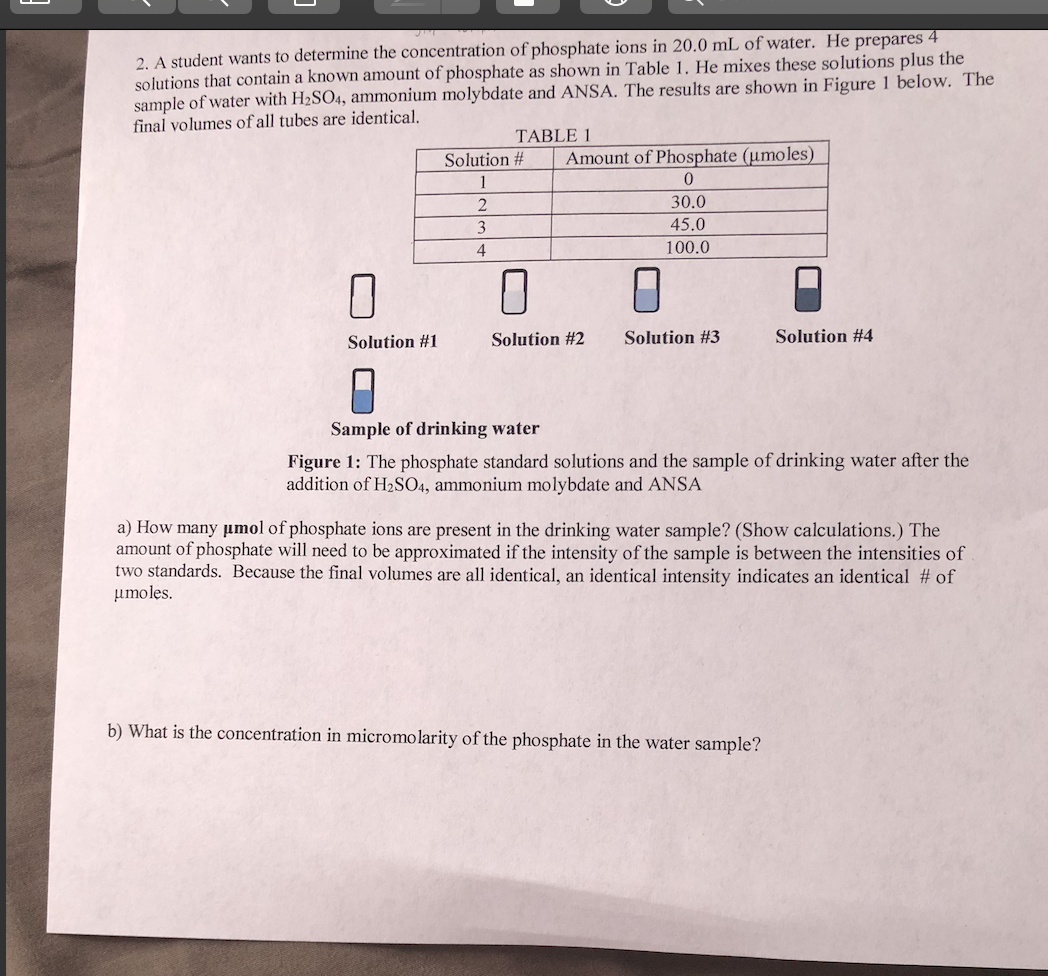2. A student wants to determine the concentration of phosphate ions in 20.0 mL of water. He prepares 4 solutions that contain a known amount of phosphate as shown in Table 1. He mixes these solutions plus the sample of water with HzSO4, ammonium molybdate and ANSA. The results are shown in Figure 1 below. The final volumes of all tubes are identical. TABLE1 | Amount of Phosphate (umoles) 0 30.0 45.0 100.0 Solution # 4 Solution #1 Solution #2 Solution #3 Solution #4 Sample of drinking water Figure 1: The phosphate standard solutions and the sample of drinking water after the addition of H2SO4, ammonium molybdate and ANSA a) How many umol of phosphate ions are present in the drinking water sample? (Show calculations.) The amount of phosphate will need to be approximated if the intensity of the sample is between the intensities of two standards. Because the final volumes are all identical, an identical intensity indicates an identical # of umoles. b) What is the concentration in micromolarity of the phosphate in the water sample?
Electronic Effects
The effect of electrons that are located in the chemical bonds within the atoms of the molecule is termed an electronic effect. The electronic effect is also explained as the effect through which the reactivity of the compound in one portion is controlled by the electron repulsion or attraction producing in another portion of the molecule.
Drawing Resonance Forms
In organic chemistry, resonance may be a mental exercise that illustrates the delocalization of electrons inside molecules within the valence bond theory of octet bonding. It entails creating several Lewis structures that, when combined, reflect the molecule's entire electronic structure. One Lewis diagram cannot explain the bonding (lone pair, double bond, octet) elaborately. A hybrid describes a combination of possible resonance structures that represents the entire delocalization of electrons within the molecule.
Using Molecular Structure To Predict Equilibrium
Equilibrium does not always imply an equal presence of reactants and products. This signifies that the reaction reaches a point when reactant and product quantities remain constant as the rate of forward and backward reaction is the same. Molecular structures of various compounds can help in predicting equilibrium.
Im having difficulty with part A and B of this homework problem, thanks in advance

Trending now
This is a popular solution!
Step by step
Solved in 3 steps with 3 images









